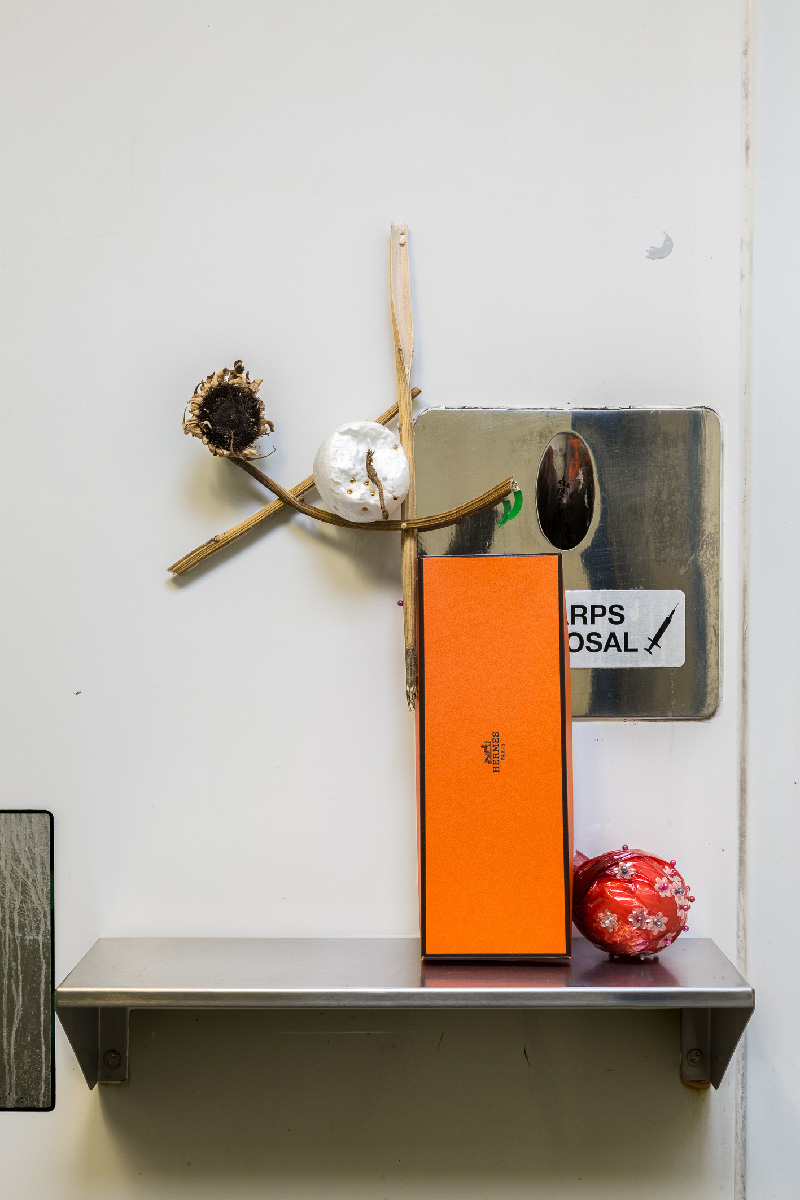Phebe Schmidt
Hot and Bothered 4, 2016
Archival Pigment Print, 12.7 x 9.53 cm.
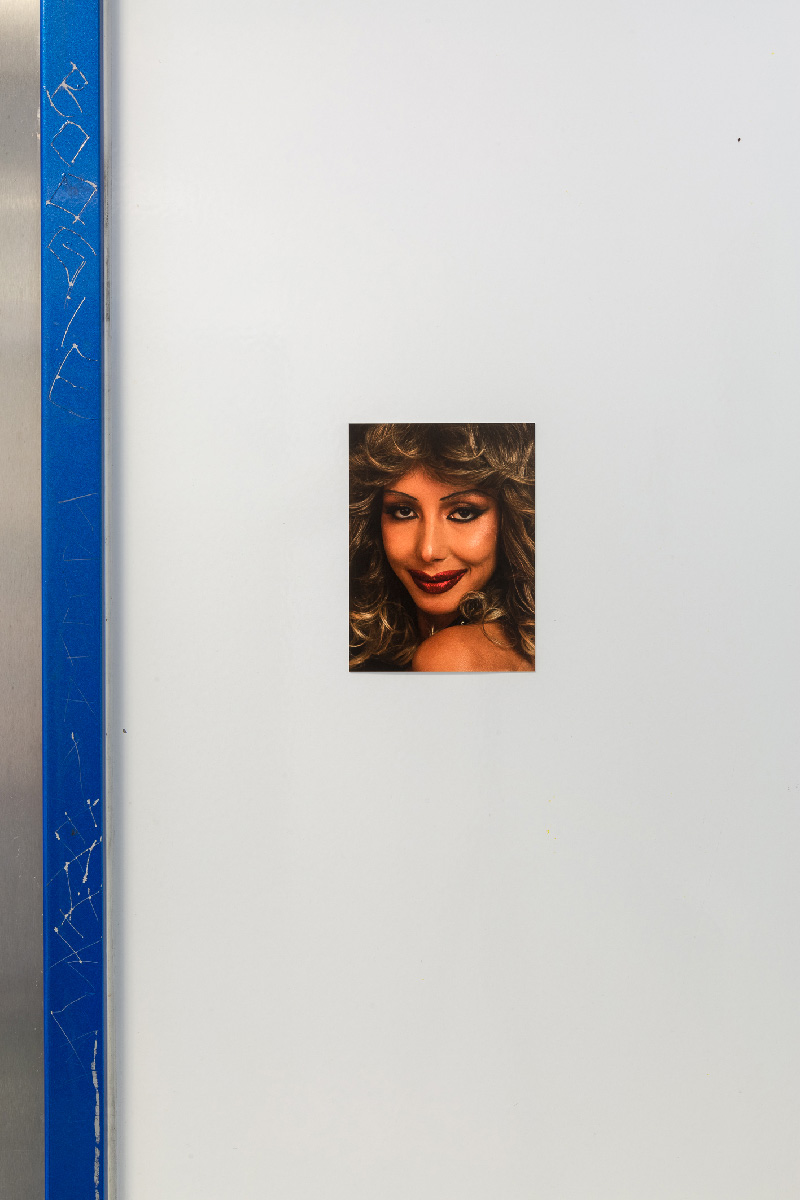
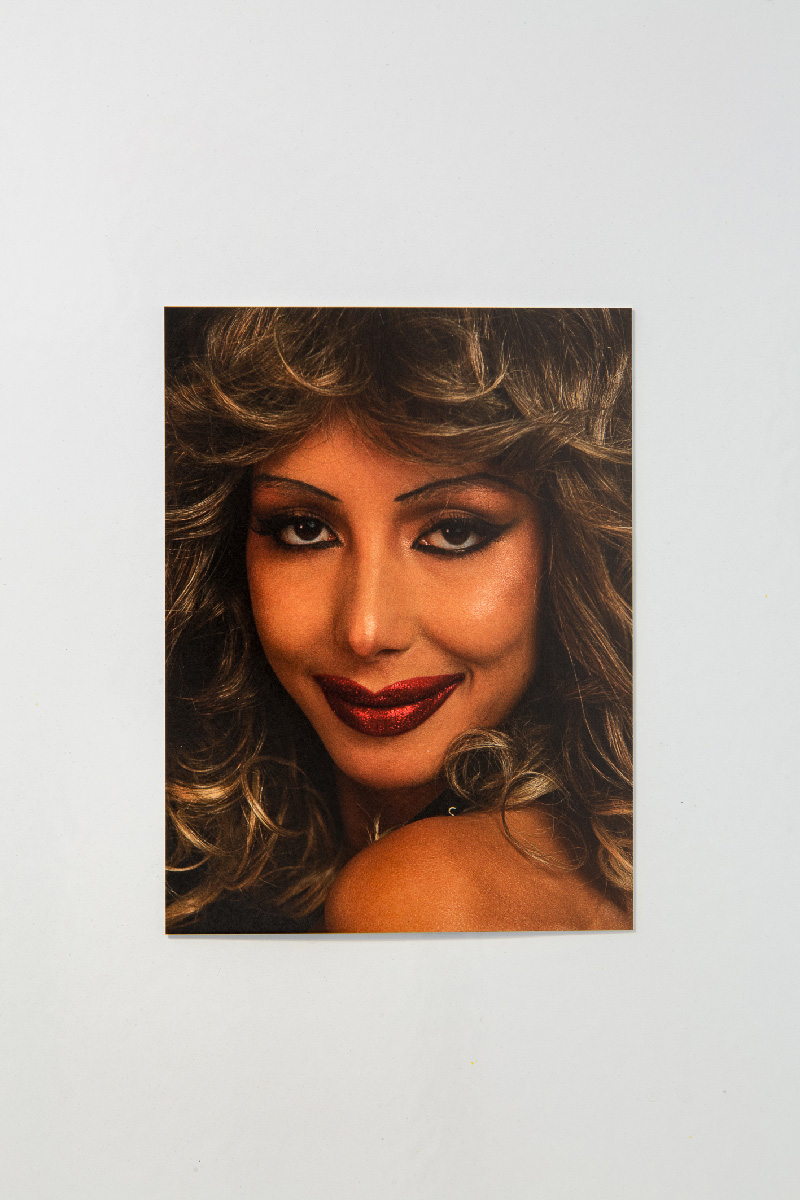
En-suite
David Attwood, Spencer Lai, Claudia Nicholson, JD Reforma, Phebe Schmidt
Curated by David Attwood
2018
Photography by Christo Crocker
En-suite brings together a group of artworks that in various ways make use of high fashion designer wares. Situated inside of a public automated bathroom, the works by Spencer Lai, Claudia Nicholson, JD Reforma, Phebe Schmidt and myself attempt to instrumentalize various designer items to critical, comical and undermining effects.
JD Reforma’s work Nothing comes between is a dramatically elongated Calvin Klein elastic waistband. Reforma exhibited a similar work in his 2017 solo exhibition Coconut Republic at Firstdraft, Sydney, which in riffing on the term ‘banana republic’ used a number of iconic international brands to speak to the Americanisation of our “modern field of vision.”1 For Reforma, such iconic emblems “are deployed as ambassadors of a seemingly counterfeit reality in which ‘America’ is the single most valuable and volatile export of our time.”2 Hanging from a conveniently placed hook, Nothing comes between falls and coils on the greasy tiled floor in gratuitous excess.
Phebe Schmidt’s photographic works are glossy high production images reminiscent of magazine glamour shots. In Hot and Bothered 4 a woman stares down the barrel of the camera lense, her smiling mouth over-applied with luscious red lipstick. In Valley of Illusion 2, a diamond emblazoned shoe sits regally atop a brown velvet chair, the toe perturbingly elongated. Like scrap-booked Vogue clippings, the images are held aloft, stuck to the back of the bathroom door like dreams to aspire to.
Claudia Nicholson’s video work Pisces operates like an animated love letter to an unknown piscean, and features the artist posing for the recipient in a cubic zirconia emblazoned g-string. A rotating pisces logo appears like a watermark over the imagery, and in its decidedly low-end, low-fi, pixelated apparition, speaks to the reaches of commercialisation and commodification: An ancient star sign is logo-ized, branded for today’s marketplace, and the personal qualities and attributes of pisceans hijacked for marketability.
Spencer Lai’s precarious arrangement untitled features a trademark orange Hermes box lid at the centre of a spinifex like assemblage, that includes a long dead sunflower stem, cellophane, polystyrene balls and a seahorse, among other debris. The lid, (which one presumes to have once protected a most coveted item from the contaminants of the outside world), is now entangled in the detritus of the natural and artificial everyday.
Nearby and reachable from a seated position on the bathroom’s aluminium toilet is my work mMMMM, a Missoni Hand towel with its centre removed, a gesture of defilement that denies the usability of the object -like a hole in a bucket. Draped over a handrail, the work suggests an at once indulgent and futile alternative to the coarse paper towel provided.
A multivalent degradation of lofty commodities pervades the works presented in En-suite, and the adornment of a sordid public toilet with designer wares intends to invite a variety of frictions between aesthetic value, exchange value, consumption, defecation, private acts and our public selves.
Of course the toilet and excretion have been used to this end in art before. Most recently, Maurizio Cattelan installed a fully functional 18 carat gold toilet at the Guggenheim Museum in New York City. Titled America, the work received extraordinary public attention, with patrons lining up to use the toilet around the clock, and even posting images of their shit in the gold bowl online. Curator Massimiliano Gioni suggests that the popularity of Cattelan’s America and its extensive digital dissemination exemplifies “the ties that now bind together bodies, images, spectacle and the economy, in an indissoluble knot where even the most secluded and literally obscene (offstage) space of a toilet is caught up in the hypervisibility and omni-pervasiveness of capital.”3
Nancy Spector argues that the potency of Cattelan’s America and its contribution to the lineage of shit-art is its participatory element, its usage “providing unprecedented personal access to an object conceived to tantalizingly represent its own value.”4 While Cattelan’s engagement with shit, value, art and the commodity is for Gioni and Spector achieved through participation and viewer access, (in its most physical sense), En-suite instead resides exclusively in the virtual realm -that is the realm of projected desires, with the exhibition’s online presentation the sole point of access to the works on display. The items of grand stature and expense therein remain out of reach: Incidentally Prada, Gucci and alike also sequester certain exclusive items, viewable only through the digital interfaces of their online stores.
Rather than remedy or ease the passing of Gioni’s indissoluble knot, En-suite instead endeavours to exacerbate it with critical awareness, from inside, perverting the contemporary ties that bond bodies, images, commodities, commerce and spectacle. A public, private space for ablutions is co opted to house a series of artworks digitised and shared online.
Phebe Schmidt
Hot and Bothered 4, 2016
Archival Pigment Print, 12.7 x 9.53 cm.


Phebe Schmidt
Valley of Illusion 2, 2016
Archival Pigment Print, 12.7 x 9.53 cm.

David Attwood
mMMMM, 2017
Missoni hand towel, 59 x 36 x 0.5 cm.
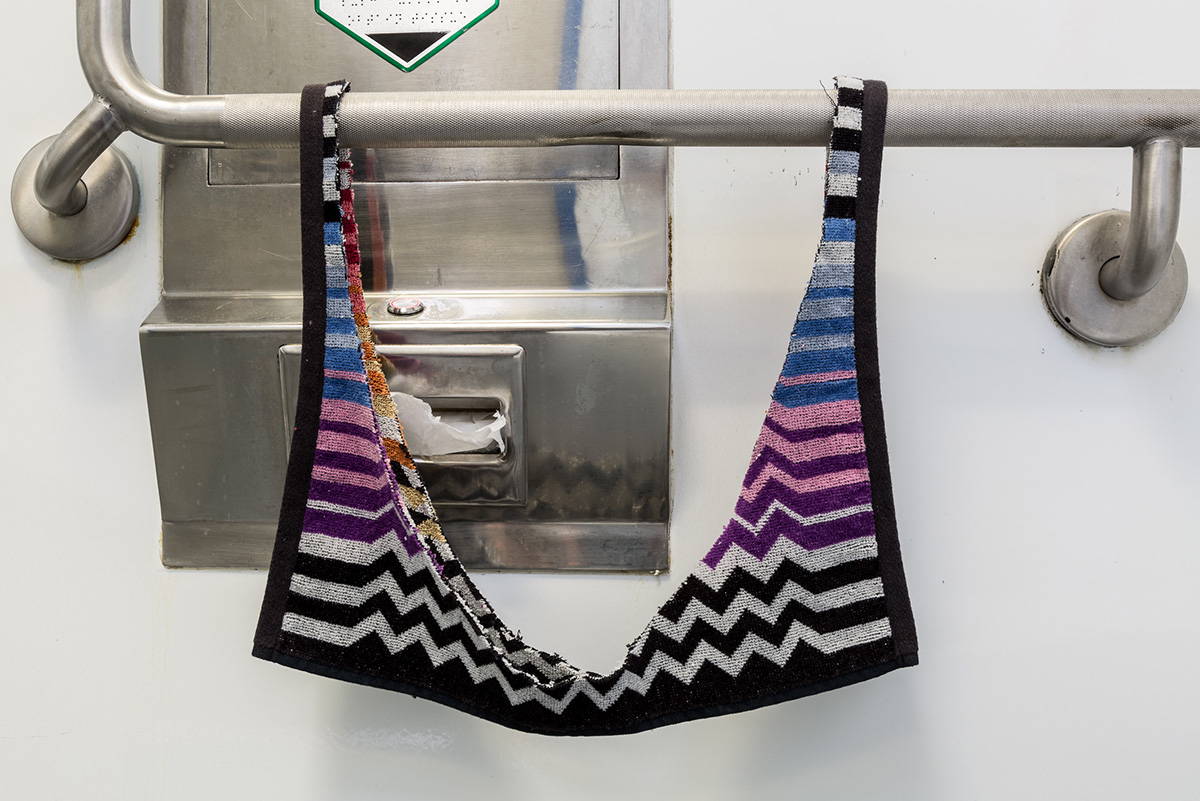
JD Reforma
Nothing comes between, 2017
reconfigured Calvin Klein underwear, environmental dimensions.
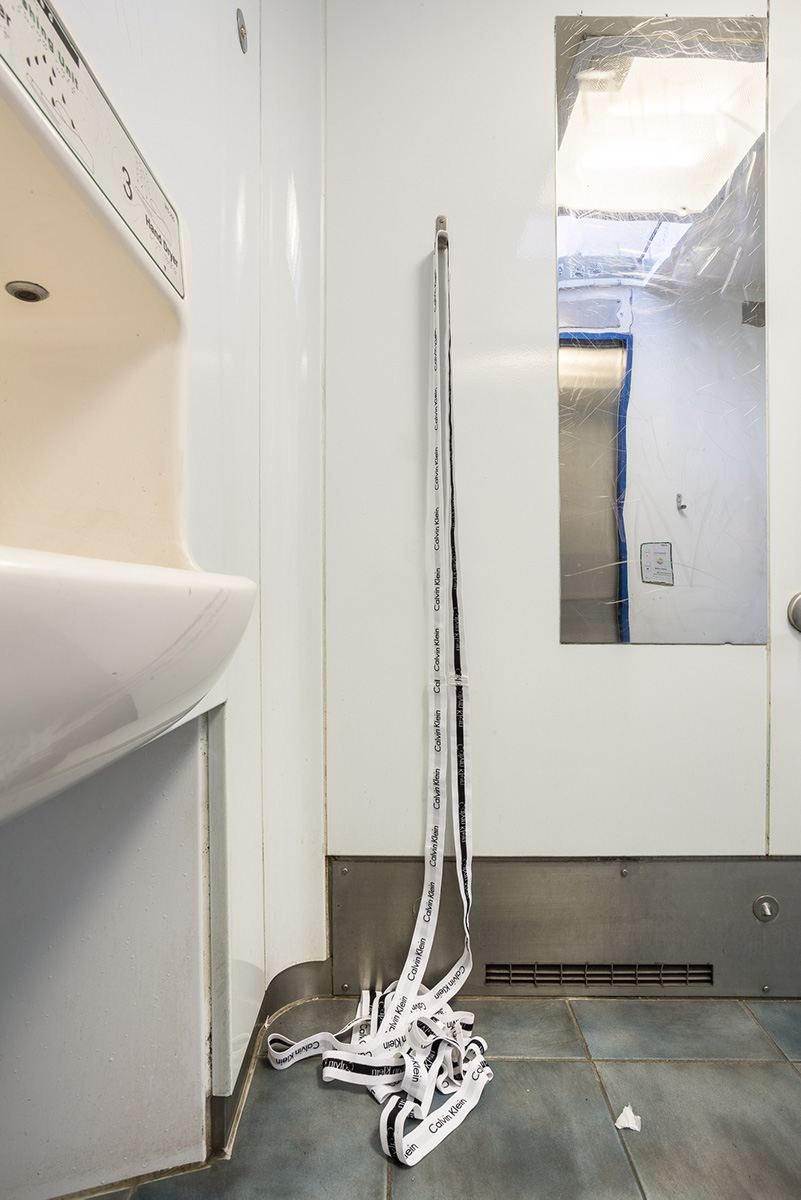

Claudia Nicholson
Pisces, 2016
Video, 1:26.
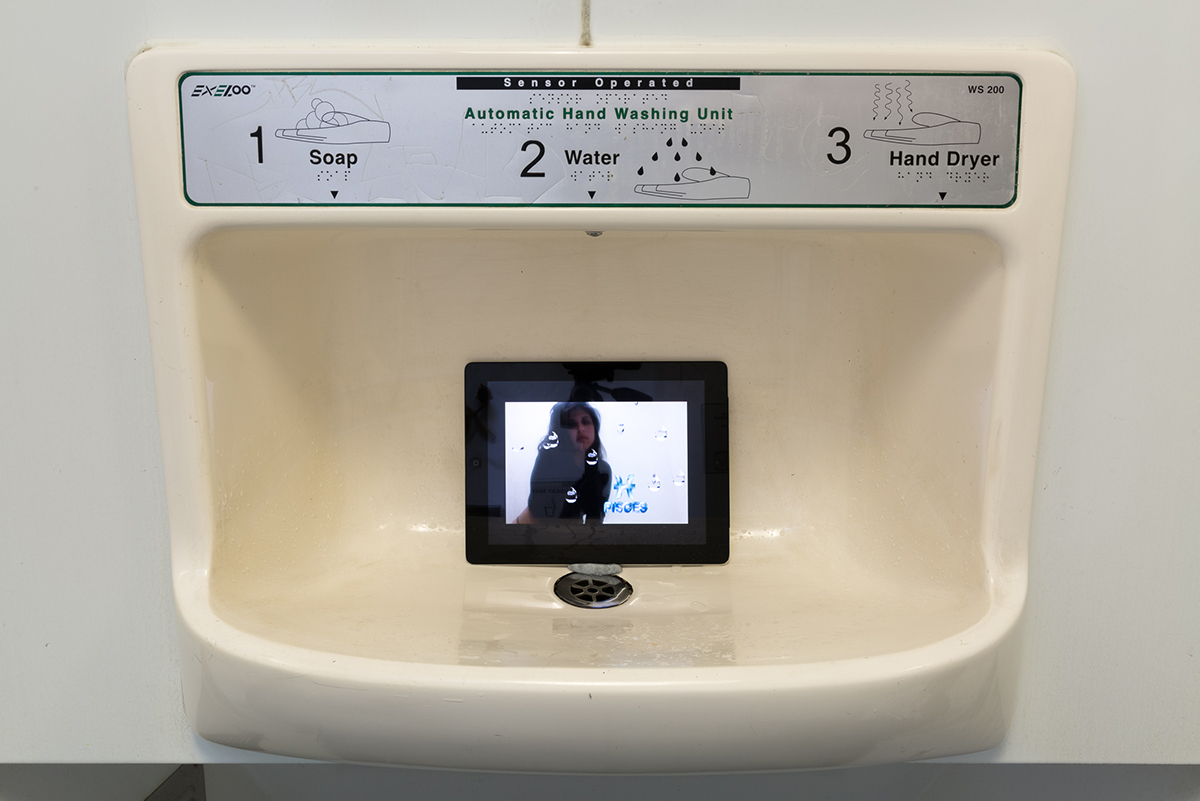
Spencer Lai
untitled, 2017
Hermes gift box, styrofoam balls, dried sunflower stems, cellophane, seahorse skeleton, bead applique, jade earrings, berry pins, 60 x 40 x 10 cm.
